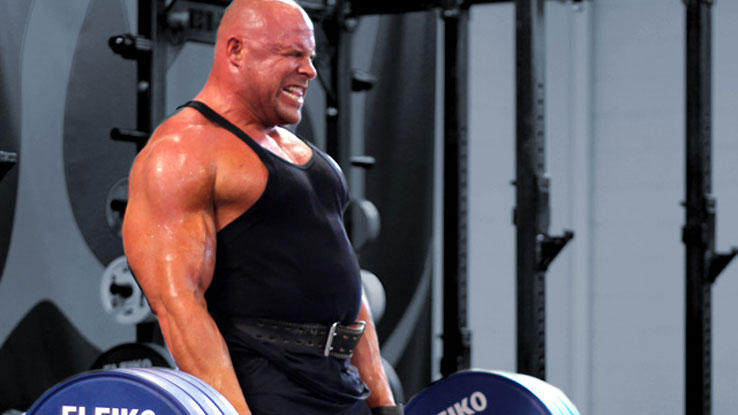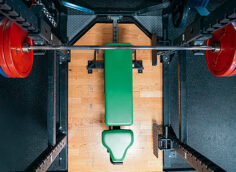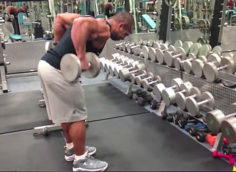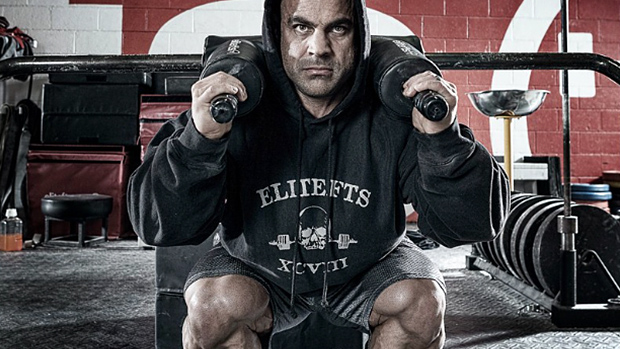Here's what you need to know...
- Type I fibers are considered "endurance fibers" and not that important for muscle building, but they can and should be hypertrophied.
- You have the same muscle fiber distribution as most pro-bodybuilders. They just know how to hypertrophy their Type I fibers.
- Undulating periodization and back-off sets target will these fibers and trigger new growth.
Every fledgling newbie that first shuffles into the gym knows that to get huge you have to focus on the fast-twitch, Type II muscle fibers. These fibers have the greatest ability to hypertrophy and we generally associate them with the biggest, strongest, most badass people in the world.
The thing is, there's plenty of room for growth in the Type I fibers!
Scientists now recognize that there are many different kinds of muscle fiber types, but we usually organize them into three categories:
- Type I
- Type IIa
- Type IIb
The fibers are differentiated mainly by:
- Nerve activity: The size of the nerve bodies and level of stimulation necessary for contraction.
- Metabolic processes: Whether the fibers use mainly the aerobic (oxidative, meaning they use oxygen) or anaerobic (glycolytic, meaning oxygen isn't necessary) processes to create the energy for contraction.
- Capillary density: How many capillaries provide blood flow to the fiber.
- Mitochondrial density: The number of mitochondria – the part of a cell that produces energy – in the fiber.
These are the fibers we're supposed to target for maximal strength and power. These fibers have large nerve bodies that require a great deal of stimulation in order to contract. That means you'll have to lift something very heavy or very quickly for them to get involved.
These fibers can produce high levels of force, but they have low capillary density and get their energy almost exclusively through anaerobic glycolysis, so they get fatigued very quickly.
We often picture powerlifters, shot putters, and offensive linemen when we think of guys with a large percentage of Type IIb fibers.
These fibers share the same characteristics as their Type IIb brothers but have higher capillary density and are able to use oxygen for energy, making them more fatigue resistant.
Type IIb fibers will convert to Type IIa through resistance training and general conditioning. They adapt to the training by producing greater capillary and mitochondrial density so they can last longer, but can still produce high levels of force and have great hypertrophy potential.
In 2008, Terzis et al. showed that capillary density is linked directly to the endurance capability of muscle tissue, so it makes sense that this would increase in Type II fibers as they are trained.
The body will adapt to whatever stimulus it's under, and this is a perfect example of how that works. These fibers will naturally return to Type IIb status if training stops, which is another example of adaptation.
When we think of Type IIa fibers, we typically picture Olympic lifters, running backs, track sprinters, and baseball players.
These fatigue resistant fibers generally produce less force than Type II fibers. They're easily excited – meaning they contract quickly under low levels of stimulation – and have much greater capillary and mitochondrial density, which allows them to keep going for a long time.
Type I fibers are generally associated with skinny people doing endurance activities, but this isn't completely true. While they're resistant to fatigue, they still have good hypertrophy properties.
Despite being given a bad rap because they aren't as big and strong as their Type II counterparts, they aren't the wimps many assume them to be.
Everyone, no matter who they are, has a mix of Type I, Type IIa and IIb fibers. Yes, even Kroc and Pudzianowski have plenty of slow twitch fibers in them. And those skinny Kenyan marathoners that bodybuilders love to make fun of have some fast twitch fibers.
The general rule is, people who have major differences from the normal person often end up being elite athletes.
Guys with way more Type II fibers have the potential to be really strong and powerful. Elite distance runners have been shown to have a higher percentage of Type I fibers. That said, most people are a decent mix.
While many of us try to stimulate mainly fast-twitch fibers, for anyone trying to get jacked up beyond belief, it would be a major mistake to ignore the Type I boys. Here's why.

In 2003 and 2004, Fry et al. jammed thick, hollow needles into guys' muscle bellies and pulled chunks out. (Now you know what a muscle biopsy is.) They found that elite Olympic weightlifters and powerlifters had a higher percentage of Type II fibers than non-athletes. No surprise there.
However, he and other researchers also found that elite bodybuilders have about the same fiber type distribution as normal people. One of the biggest differences between the groups was that elite bodybuilders actually have significantly more hypertrophy of the Type I fibers than Olympic lifters and powerlifters.
That means that Arnold, Haney, Yates, and even Ronnie Coleman weren't the Type II machines we all presumed them to be. They just get their Type I fibers bigger than everyone else.
Of course, they also get a ton of hypertrophy in their Type II fibers, but this research showed that most of us – including you – probably have fiber type distribution similar to that of the biggest guys in the world.
You read that right. Researchers have found that elite powerlifters and Olympic lifters generally have a greater percentage of Type II fibers than normal people, but elite bodybuilders have about the same distribution as non-athletes.
This research offers us a very clear message: you can certainly get big by focusing on Type II fibers, but you can develop extraordinary muscle mass by stimulating all the fibers, including Type I's.
I'm not suggesting you focus exclusively on the slow-twitch Type I's. Programs using high loads, powerlifting routines, or high-speed movements should comprise the majority of your program.
But to take advantage of the full development of your musculature, try using two proven concepts: undulating periodization and back-off sets.
Rather than getting sciencey about periodization, all you need to know is that you'll achieve optimal results by including heavy, medium, and lighter loads in your program.
To clarify, here's what is typically considered heavy, medium, and light:
- Heavy: 1-5 reps, typically 85-100% of 1RM
- Medium: 6-10 reps, typically 70-85% of 1RM
- Light: 10-20 reps, typically 50-75 of 1RM
Undulating periodization is a fancy name for including all of these on a consistent, planned basis. In a 4-day, upper/lower split, here's an example of how it can work:
Week 1
- Day 1: Heavy Upper Body
- Day 2: Heavy Lower Body
- Day 3: Medium Upper Body
- Day 4: Medium Lower Body
Week 2
- Day 1: Heavy Upper Body
- Day 2: Heavy Lower Body
- Day 3: Light Upper Body
- Day 4: Light Lower Body
I've used this exact system with many collegiate and professional athletes and achieved exceptional results. You can see that heavy weights are used more often than light or medium weights, but it's all included in a systematic way.
This kind of programming gives you both the heavy loads necessary to stimulate the Type II fibers as well as the lighter loads that do a better job getting the Type I fibers to grow. The medium days take advantage of time under tension, one of the factors involved in hypertrophy.
In the pro-bodybuilding world, it's not uncommon to see guys lift jaw dropping amounts of weight and then lighten up at the end to get a good pump. While the actual pump has been associated with a great workout, it may do more than just make you feel like your skin is bursting.
In 2004, Goto et al. published a paper that examined back-off sets. They had one group perform 5 sets of 5 with 90% of 1RM and another that did the same program but added a high-rep set with 50% of 1RM at the end of the workout.
The back-off set group ended up seeing significantly greater improvements in both hypertrophy and strength. While you could argue that the improvements were just a result of increased volume, the fact remains that it worked better than the heavy training alone.
Even if the increased volume was responsible for the improvements, the results were good enough that we should all take notice. The researchers admitted that they weren't sure if it was the combination of heavy and light loads, increased volume, increased blood flow, or the stimulation of both Type I and Type II fibers that were responsible for the improvements. More research will be done to figure this out, but for now it doesn't really matter so long as it works.
Considering what I've already presented about fiber types, the back-off set seems to be a great way to stimulate the Type I fibers at the end of a workout that focused on Type II fibers.
It doesn't take much time, the pump feels incredible, and because it's at the end of your workout, it's a perfectly acceptable time to take a set to complete failure, which might also contribute to additional stimulation of all your fibers.
Understanding fiber types helps us program for optimal results. If you're an elite Olympic lifter or powerlifter and you aren't interested in jacked-up guns, then don't worry about it. Stick to what you're doing.
If, however, you're the kind of guy who wants to pack on strength and mass as fast as possible, take a little time to build up those Type I fibers everyone else has told you to ignore.
After all, if you have similar fiber type distribution as the biggest guys in the world, you might as well take advantage of it. Rather than stimulating half of your fibers, why not hit them all?





